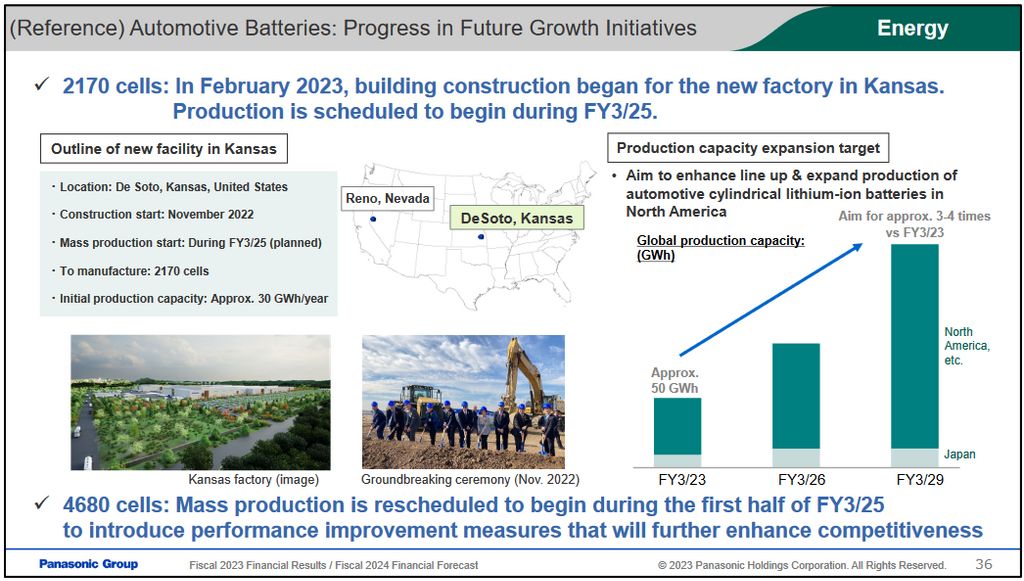Panasonic announced that it has rescheduled mass production of the upcoming 4680-type cylindrical battery cells in order to improve their performance and thus enhance competitiveness.
According to the previous reports, the Japanese company launched pilot production in May 2022 and the next step was to start series production (two production lines) at its Wakayama Factory in western Japan (10 gigawatt-hours (GWh)/year according to a rumor) in the 2024 fiscal year (between April 1, 2023 and March 31, 2024).
However, now it seems that the production will begin in the first half of the 2025 fiscal year (between April 1, 2024 and March 31, 2025), which means by September 2024.
“[Commercialization of 4680 cells]
・Mass production rescheduled to begin during 1H FY3/25 to introduce performance improvement measures that will further enhance competitiveness”
That’s a lot of waiting for Tesla, which is considered the main customer for the new type of cylindrical battery cells.
Panasonic already shipped to Tesla its prototype cells in May 2022. At the time, the company was asked to speed up its developments.
We don’t know the details, but it seems that the cells are not yet ready for prime time at volume and Panasonic must improve the cell or its manufacturing technology.
Panasonic is Tesla’s long-standing EV battery supplier, which from the beginning was engaged in all cylindrical types: 1865-, 2170- and 4680-type.
Currently, the company has two main production bases and one under construction:
As we can see, according to Panasonic’s latest report, the company can supply only up to 51 GWh of cylindrical battery cells per year, which is not that much in 2023. Panasonic was left behind by other manufacturers (CATL, LG Energy Solution and BYD) due to a lack of new investments over several years, and now it seems that the 4680-type is not coming for at least a year.
This also means that Tesla is on its own in terms of 4680-type batteries, with two in-house production sites:
Well, there might be other manufacturers that will help with additional volumes of larger cylindrical cells, like LG Energy Solution, but first, they have to complete their development and build a plant too.



